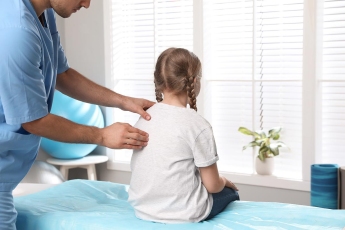Why Did Your Child Get Juvenile Idiopathic Arthritis?
JIA, or Juvenile Idiopathic Arthritis, is the most widely diagnosed arthritis in kids 16 years old or younger. Despite being so common and millions spent on research, it is not fully understood with no specific cause yet discovered. In some cases kids can actually “grow out” of the disease but many require life-long treatment. There are some possible causes that may be associated with this autoimmune disorder including:
- An infection that starts the immune system’s response
- Genetics and inherited factors
- Females are more likely to develop rheumatoid arthritis
- Stress, especially emotional, can make the symptoms more intense
- Hormones, especially those tied to gender
What Types of JIA Are There?
There are many types of JIA but three types of juvenile idiopathic arthritis are the most common; oligoarticular, polyarticular, and systemic.
Oligoarticular JIA
Oligo means few, which in this case means that in the first six months of the disease four joints or less are affected. Large joints, like shoulders and knees are the most typically afflicted in the body, with small joints, toes and spine, possibly being affected in some cases. In most cases one side of the body is affected which can cause growth to occur unevenly.
Polyarticular JIA
Smaller joints are more commonly affected with this type of JIA, which affect more joints than oligoarticular. Polyarticular patients have the risk to develop rheumatoid arthritis due to the presence of an antibody called rheumatoid factor. Typically patients with this type of arthritis experience the effects in joints on both sides of the body.
Systemic JIA
Different from oligoarticular and polyarticular, this type of JIA affects both boys and girls on an equal basis. Systemic JIA is the most difficult type to diagnose for a number of reasons. It usually presents with a pink rash, fever, and arthritis that comes and goes throughout the day. Like colic seen in infants, the fever sometimes occurs at the same time each day with the rash following suit. Making it even more difficult to diagnose, the rash typically moves around the body and stays in one spot for less than an hour.
What Should You Watch For?
In all cases of juvenile idiopathic arthritis it is important to watch for a few problems including vision, growth and joint deformation. Eye problems sometimes occur without warning or symptoms. Inflammation in the eye can lead to a deterioration of vision and sometimes even permanent blindness. It is important to see an optometrist often, sometimes as much as twice a year or more. It is very common for some kids to see growth restricted, which can be made worse by some of the medicinal treatments. Deformities in the joints are often seen with children who go untreated or neglect their physical therapy. In most cases the deformities are lifelong and untreatable.
Get Help For Your Kid (and Yourself)
The good news is that there is help. A few orthopedic physicians, including some at IBJI, specialize in this type of arthritis. Almost always a team of specialists is needed to help your child’s JIA. This team may consist of rheumatologists, orthopedic surgeons, occupational therapists and physical therapists and others outside the orthopedic medicine community like teachers, dentists and ophthalmologists. At IBJI we can provide access to every orthopedic specialty in one place and can refer you to other team members that are outside the institute. Schedule online today with one of our juvenile idiopathic arthritis specialists. We are the right choice to treat your child’s JIA and get them acting like a kid again.
*This content is for information only and is not intended to replace the diagnosis, treatment, or medical advice from your treating healthcare professionals. The content does not provide medical advice, does not constitute the practice of medicine or other healthcare professional services, and does not create a doctor-patient relationship. You should not rely on this information as a substitute, nor does it replace professional medical advice, diagnosis, or treatment. If you have concerns or questions, seek the advice of your healthcare professionals. If you think you may have a medical emergency, call your doctor or 911 immediately. Do not rely on electronic communications or communicate through this website for immediate, urgent medical needs. This website is not designed to facilitate medical emergencies. The use of the information is at the reader’s own risk. The links are provided for information and convenience only. We cannot accept responsibility for the sites linked or the information found here. A link does not imply an endorsement of a site.




